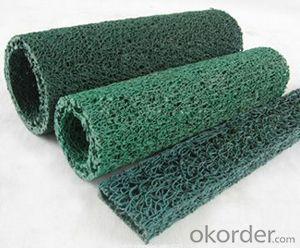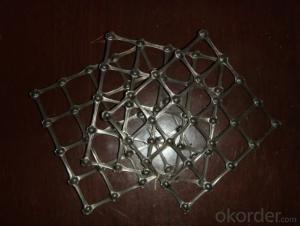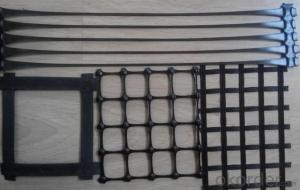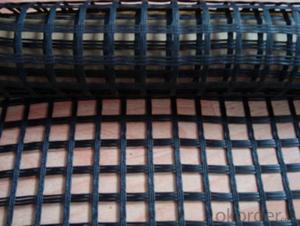Plastic Blind Ditch/Permeable Hard Geotube
- Loading Port:
- Qingdao
- Payment Terms:
- TT OR LC
- Min Order Qty:
- 1000 m
- Supply Capability:
- 150000 m/month
OKorder Service Pledge
OKorder Financial Service
You Might Also Like
Packaging & Delivery
| Packaging Detail: | standard packing or according to client's request |
| Delivery Detail: | 15 days after receiving T/T |
Geocomposite drain pipe technical datas
Item | Square shape | Circular shape | |||||||||
Type | YA7030 | YA1235 | YA1550 | YB60 | YB80 | YB100 | YB150 | YB200 | YB250 | YB300 | |
Outer size(mm) | 70x30 | 120x35 | 120x50 | φ60 | φ80 | φ100 | φ150 | φ200 | φ250 | φ300 | |
Cannular size (mm)≥ | 40x10 | 40x10x2 | 40x20x2 | φ25 | φ45 | φ55 | φ80 | φ120 | φ170 | φ220 | |
Voidage (%)≥ | 70 | ||||||||||
Compress strength (kPa) | Flattening 5% | 70 | 60 | 50 | 85 | 80 | 70 | 50 | 40 | 35 | 30 |
Flattening 10% | 110 | 110 | 70 | 170 | 160 | 140 | 70 | 60 | 55 | 50 | |
Flattening 15% | 150 | 130 | 125 | 220 | 200 | 180 | 100 | 90 | 80 | 70 | |
Flattening 20% | 190 | 180 | 160 | 280 | 250 | 220 | 125 | 120 | 110 | 100 | |
plastic blind ditch
is made of plastic core and outer filtering cloth. In the state of hot melting, it is formed into three-D network structure. It has two shapes: rectangle and round. This kind of pipe has some advantages: good drainage, high pressure resistance, light weight, so it is very popular in some projects.Application:Highway and roadway subgrade,Retaining wall,Landfill,Roof garden,Building foundation,Underground irrigation.
- Q:Are geogrids suitable for reinforcing slope stabilization mats?
- Yes, geogrids are suitable for reinforcing slope stabilization mats. Geogrids provide additional strength and stability to the mats, helping to prevent erosion and soil movement on slopes. They enhance the load-bearing capacity of the mats and improve their overall performance in stabilizing slopes.
- Q:Are geogrids resistant to chemical exposure?
- Yes, geogrids are typically resistant to chemical exposure. They are designed to withstand various environmental conditions, including exposure to chemicals, without significant degradation or loss of strength.
- Q:Can geogrids be used for reinforcement in embankments and dams?
- Yes, geogrids can be used for reinforcement in embankments and dams. Geogrids are a type of geosynthetic material that provide strength and stability to soil structures. They are commonly used in civil engineering projects to reinforce and stabilize embankments and dams, as they improve the overall structural integrity and prevent soil erosion.
- Q:Can geogrids be used in mining and landfill applications?
- Yes, geogrids can be used in both mining and landfill applications. Geogrids are commonly used in these industries to reinforce and stabilize the soil or waste materials, preventing erosion, improving stability, and enhancing the overall performance of the structures.
- Q:Can geogrids be used in reinforced earth bridge abutments?
- Yes, geogrids can be used in reinforced earth bridge abutments. Geogrids are commonly used in the construction of bridge abutments as they provide reinforcement and stabilization to the soil. They help distribute the load and increase the overall strength of the structure, making it more resistant to settlement and lateral forces. Geogrids are an effective solution for enhancing the stability and durability of reinforced earth bridge abutments.
- Q:Are geogrids suitable for reinforcement of soft subgrades?
- Yes, geogrids are suitable for reinforcement of soft subgrades. Geogrids are commonly used in civil engineering projects to improve the stability and strength of weak soil or subgrade. They help distribute load and reduce settlement, preventing soil deformation and enhancing overall performance. Geogrids effectively reinforce soft subgrades by confining the soil particles and increasing their shear resistance, resulting in improved stability and reduced risks of failure.
- Q:Can geogrids be used in stabilization of mine waste dumps?
- Yes, geogrids can be used in the stabilization of mine waste dumps. Geogrids are commonly used in the civil engineering field for soil stabilization, reinforcement, and erosion control. By incorporating geogrids into mine waste dumps, they can provide additional strength and stability to the structure, reducing the risk of slope failure and erosion. Additionally, geogrids can help distribute the load more evenly, preventing settlement and maintaining the integrity of the waste dump.
- Q:Can geogrids be used in railway ballast reinforcement applications?
- Yes, geogrids can be used in railway ballast reinforcement applications. Geogrids provide effective reinforcement to the ballast layer, increasing its strength and stability. By distributing loads more evenly, geogrids help to reduce settlement and deformation, improving the overall performance and longevity of the railway track.
- Q:Can geogrids be used in landfill capping systems?
- Yes, geogrids can be used in landfill capping systems. Geogrids are often used as reinforcement materials in landfill capping systems to enhance stability, prevent erosion, and provide long-term support for the capping layer. They are placed between layers of soil or other materials to improve the overall performance and effectiveness of the landfill capping system.
- Q:What is the effect of cyclic loading on geogrid behavior?
- Cyclic loading on geogrid behavior can lead to a reduction in its tensile strength and stiffness over time. This is primarily due to the accumulated damage and deformation caused by repeated loading and unloading cycles. The degradation in geogrid performance can affect its ability to provide reinforcement and stability in various geotechnical applications, such as retaining walls or road pavements. Therefore, careful consideration of cyclic loading effects is necessary when designing and evaluating geogrid installations to ensure their long-term effectiveness and durability.
1. Manufacturer Overview |
|
|---|---|
| Location | |
| Year Established | |
| Annual Output Value | |
| Main Markets | |
| Company Certifications | |
2. Manufacturer Certificates |
|
|---|---|
| a) Certification Name | |
| Range | |
| Reference | |
| Validity Period | |
3. Manufacturer Capability |
|
|---|---|
| a)Trade Capacity | |
| Nearest Port | |
| Export Percentage | |
| No.of Employees in Trade Department | |
| Language Spoken: | |
| b)Factory Information | |
| Factory Size: | |
| No. of Production Lines | |
| Contract Manufacturing | |
| Product Price Range | |
Send your message to us
Plastic Blind Ditch/Permeable Hard Geotube
- Loading Port:
- Qingdao
- Payment Terms:
- TT OR LC
- Min Order Qty:
- 1000 m
- Supply Capability:
- 150000 m/month
OKorder Service Pledge
OKorder Financial Service
Similar products
New products
Hot products
Related keywords






























